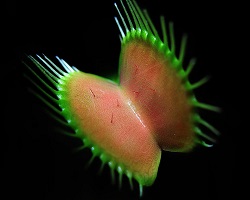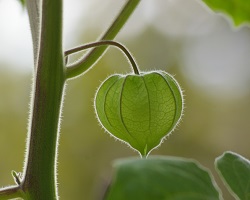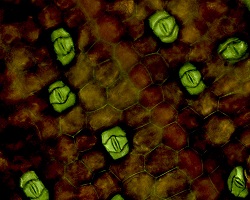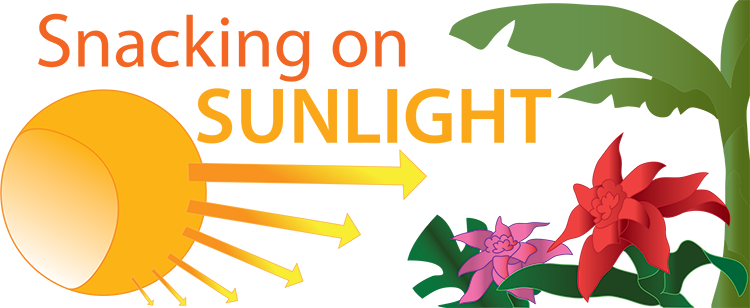
Illustrated by: Angela Halasey
show/hide words to know
Plants Make Their Own Food
Do plants eat? Yes, but not like we do. Instead of going to the kitchen, the local store, or restaurant for a meal, they get food using a process called photosynthesis.
Take a quick look in a dictionary and you will see that “photosynthesis” is made from two words - “photo,” meaning light, and “synthesis,” which means to make something. Just knowing these root words gives a hint about the way plants get their food. They make it using light.
Made From Light
Like animals, plants need energy to do work. Humans and other animals eat food to get energy. Your day might include cereal for breakfast, a sandwich for lunch and maybe a salad and fish for dinner. These foods and also many of the things we drink give us energy.
Plants don't eat food. They use the energy from the sun, or other light and use it to make their food. The ingredients for this process are water, air, and light. Plants don’t use all the parts of the air, they only use the carbon dioxide (CO2) to make their food. They produce oxygen during this process.
Plants use photosynthesis to make sugar. Just like eating sugar gives humans energy to work and play, sugar allows plants to grow and do other important work.
Snacking on Light
Like its name, photosynthesis can be split into two parts. The first part is the light-dependent reactions. In these reactions, plants convert sunlight energy into different forms of energy that are used in the second part of photosynthesis. In the second part, the Calvin cycle, carbon dioxide from the air and the energy from the light-dependent reactions are used to make a sugar called glucose (Greek gleukos = sweet wine).
Where the Work is Done
Inside plant cells there are little factories called chloroplasts. It is inside the chloroplasts where both parts of photosynthesis happen. These little factories also make a pigment that gives plants their green color. The pigment is called chlorophyll. Besides giving leaves and stems their green color, chlorophyll also helps plants soak up sunlight energy.
Do Plants Breathe?
Oxygen, the gas we breathe, is a product of the light-dependent reactions of photosynthesis. We breathe out carbon dioxide, which plants use in photosynthesis. Plants have tiny holes in their leaves called stomata. Stomata open to allow air to enter the leaf so that the plant can get carbon dioxide for photosynthesis.
The open stomata can allow a lot of water to leave the plant through evaporation, so stomata close when too much water exits. Plant cells also use oxygen when they break down sugars for energy in cellular respiration (Latin re = again, and spirare = to breathe). All cells respire, but only plants, algae, and some bacteria also have photosynthesis.
All of the carbon in our bodies came from photosynthesis. Just think about the foods you eat. They come from plants or from animals that eat plants. Our carbon comes from other living things, so we are called consumers or heterotrophs (Greek heteros = other, different, and trophos = feeder). Plants are producers or autotrophs (Greek auto = self, and trophos = feeder), which means that they get carbon from sources that are not living. Carbon dioxide from the air is the specific carbon source for plants, so you could say that plants are made out of “air”!
Images via Wikimedia Commons. Cyanobacteria image by BASF - The Chemical Company.
View Citation
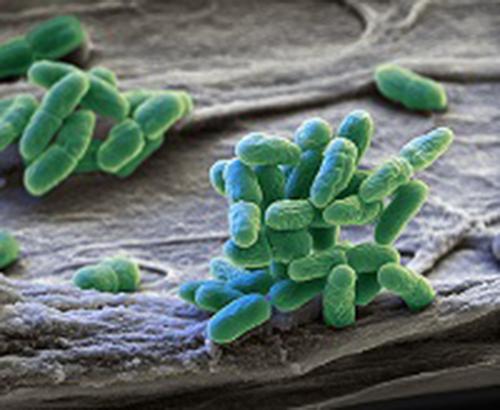
Plants aren't the only photosynthetic organisms. Cyanobacteria also harness the sun's energy, as do most algae.
Be Part of
Ask A Biologist
By volunteering, or simply sending us feedback on the site. Scientists, teachers, writers, illustrators, and translators are all important to the program. If you are interested in helping with the website we have a Volunteers page to get the process started.







